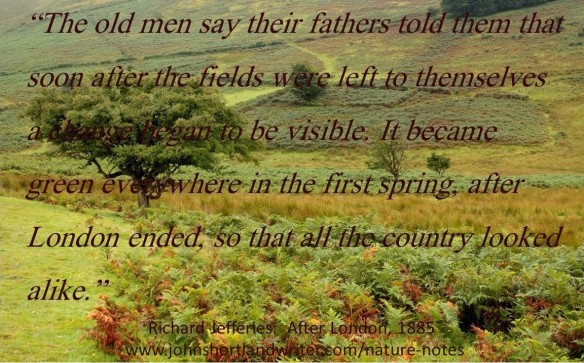[Scroll down the page to see more images and prose – the page will continually be added to. Click on the photos to enlarge. Recommended screen size 125-150%.]
I remember learning this poem as a small child . I’d forgotten all about it until I heard the weather forecast mentioning high winds when I remembered the line March brings breezes sharp and shrill… I had no idea that the poem was by Coleridge’s daughter or that it was written so very long ago. I can’t imagine a book of children’s poems these days being given a title like this one!

These words were written by Ernest Pulbrook 100 years ago. I’d say that a century hasn’t altered things that much. I’ve always thought that I learnt far more from roaming the lanes and fields of my country childhood than I ever did from formal schooling!

The writing in old books is often my inspiration for my own writing but to modern eyes their script seems naive and in this case, perhaps, a tad condescending. Having said that, I’ve only ever had one South Sea Island friend and she, I think, would probably agree with the author’s sentiment.

nevertheless we share with such children of Nature as South Sea Islander….”
Rachel Carson is better known for her pioneering work, Silent Spring. Her book, The Sea Around Us, is of equal importance and now, some 70+ years after it was written we can see how accurately she foretold of the fate that awaits us too.

The opening passage from Richard Jefferies’ post-apocalyptic tale of the demise of the UK after disaster befell it. After London is the remarkable story of how nature fights back leaving the remnants of mankind returning to a lifestyle left behind many centuries earlier. Another reminder (if we need one just at present) that man isn’t always in control of his destiny. First published in 1885, long before nuclear or even H G Wells’ novel, The War of the Worlds. After London can be read online at http://www.gutenberg.org/files/13944/13944-h/13944-h.htm#Chap1-1

This one isn’t quite nature, I know, but a photo text nonetheless. I produced this for a blog post on Tennyson and our family connections, the discovery of which kindled an interest in his work. Just about everyone knows the old parlour song Come Into the Garden, Maud but do they know that it is part of an epic love poem? These few lines appear earlier in Maud and brought out the old romantic in me… As the poem progresses love changes to infatuation, jealousy and death. Oh well, what would you expect from the Victorians…

Winter, when the days are grey, damp and overcast, the best place to be is indoors beside a warm fire. On cold, frosty days, especially when there is sunshine, it is quite different: the air is as crisp as the hoar underfoot, filling the lungs with its coolness yet bringing warming joy to the heart. Nature is silenced, the sense of magic is palpable.
In Winter in the Garden, E T Cook in 1908 captures one such moment…

There is something rather appealing about tiny, wild flowers. For me, the bird’s foot lotus or trefoil always makes me think of childhood summers – whereas my sister was content to make daisy chains from those found on the lawn, I wanted to search dry, grassy banks for what we called Eggs and Bacon. To find the occasional burnt orange flower (the bacon) amongst the countless golden yellow ones (the eggs) was almost as good as being presented with a plateful of the real thing!
The July Grass, Richard Jefferies, 1889

For the first of my Nature Notes I have chosen one of my favourite photographs and the writing of one of my favourite authors. The words of Victorian naturalist and mystic (although I doubt if he would have described himself as such) match my feelings so perfectly and the photo of my father and me as a young boy has a timeless quality about it.
The Open Air, Richard Jefferies, 1885 (I’m not quite as old as that!)

